The Gift of South Dakota
Subscriptions to South Dakota Magazine make great gifts!
Subscribe today — 1 year (6 issues) is just $29!
The Dusty Trail
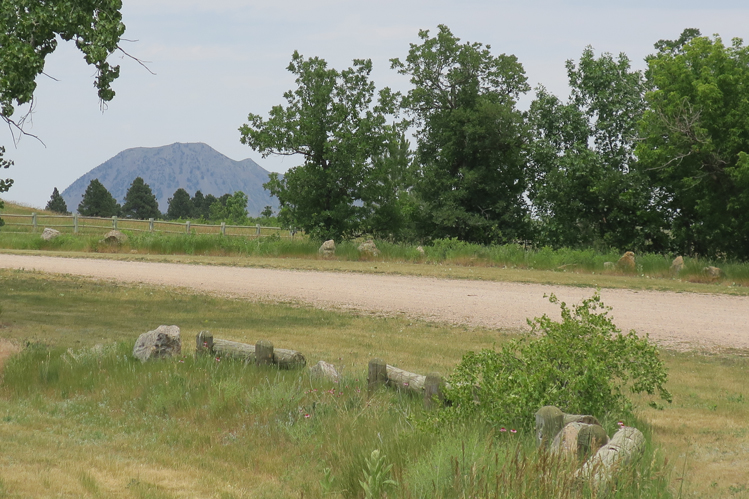 |
| Bear Butte is a nearly constant presence while traveling the Fort Meade National Backcountry Byway, a 5-mile winding gravel path in Meade County. |
South Dakota has thousands of miles of gravel roads, but perhaps none so packed with history and nature as the stretch known as the Fort Meade National Backcountry Byway.
The 5 miles of winding gravel known locally as the Old Stone Road begins at Exit 34 along Interstate 90 and ends at the grounds of old Fort Meade, a military post on the outskirts of Sturgis and in the shadow of Bear Butte that remained active from 1878 to 1944. Army engineers had called for a fort on the outskirts of the Hills for 20 years because they feared an Indian war would likely break out in the prairies below Bear Butte. But the government didn’t act until gold was discovered in the Black Hills in 1874. White settlers flooded into the Black Hills even though the land was set aside exclusively for Indian tribes under the Fort Laramie Treaty of 1868. The army needed to protect gold seekers and the settlements quickly popping up around the Hills, and so Fort Meade grew near the convergence of heavily traveled trails leading from Bismarck, Pierre and Sidney, Nebraska.
The remains of the Seventh Cavalry reorganized at Fort Meade following its devastating defeat at the Battle of the Little Bighorn in 1876. Over the years, the fort was also home to the 4th Cavalry, the African-American 25th Infantry (whose men were called Buffalo Soldiers) and earned a place in American history for helping turn “The Star-Spangled Banner” into the national anthem.
All of those stories are chronicled in the Fort Meade Museum, which was our reward after spending an afternoon exploring the backcountry byway. We started our journey at Exit 34. The beginning of the byway is clearly marked for motorists heading west from Rapid City, but you’ll know you’ve come to the right spot when you see the meticulous rows of gleaming white headstones within the Black Hills National Cemetery. More than 21,000 veterans of every conflict since World War I and their family members have been buried there since the cemetery opened in 1948.
On the opposite side of the interstate stands the quaint VFW Memorial Chapel. The tiny church isn’t officially part of the national cemetery, but families occasionally stop for a quiet moment of reflection. Inside, there are four short pews and an altar with Bibles and hymnals.
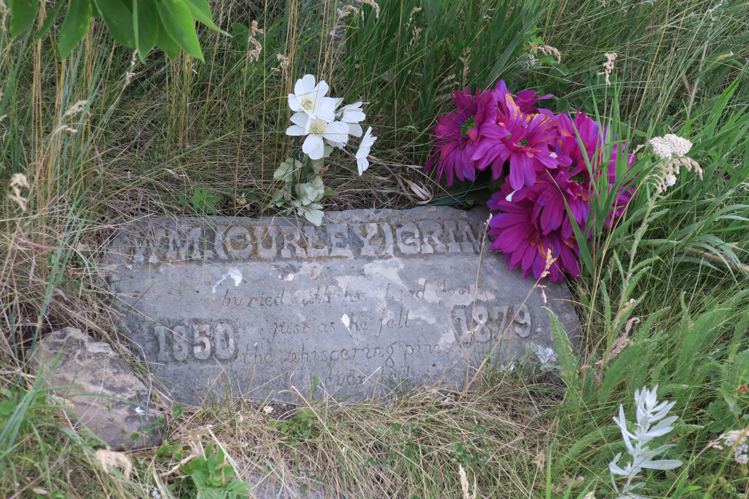 |
| Curley Grimes was buried where he fell. |
Though the byway is steeped in military history, the next two stops on the route allow visitors to explore nature and the earlier lawless days of the Black Hills. Just up the road from the chapel is a well-worn walking path that leads to the grave of William “Curley” Grimes, one of the most notorious criminals to work the Hills. Grimes was suspected of robbing a post office and had been arrested by lawmen W.H. Llewellyn and Boone May in February of 1880. As they were transporting him to jail in Deadwood, Grimes reportedly asked to have his handcuffs removed because the winter chill was freezing his hands. The lawmen obliged, but then Grimes spurred his horse northward. Llewellyn and May opened fire and Grimes fell dead, just over the boundary of the Fort Meade military reservation.
Llewellyn and May rode to Fort Meade and reported the killing to its commander, Col. Samuel Sturgis. He sent a detail to bury Grimes where he had fallen. Today a single tree stands over Grimes’ gravestone, which lists his death date as 1879, even though most accounts place his murder in early 1880. The stone is inscribed with a haunting verse: “buried with his head down / just as he fell / the whispering pines / will never tell.”
Llewellyn and May were tried for Grimes’ murder in August of 1880, but they were acquitted. And Grimes has obviously not been forgotten. On the day we visited, two fresh bouquets of flowers, one white and the other purple, decorated his final resting place.
Across the road from the Grimes gravesite stood a lone tent along Alkali Creek, a bubbling brook that begins about 3 miles to the southwest and flows 30 miles east through Meade County before emptying into the Belle Fourche River. A nature trail begins at the creek and winds just more than half a mile through the lush vegetation of the creek valley, stands of tall ponderosa pines and mixed-grass prairie.
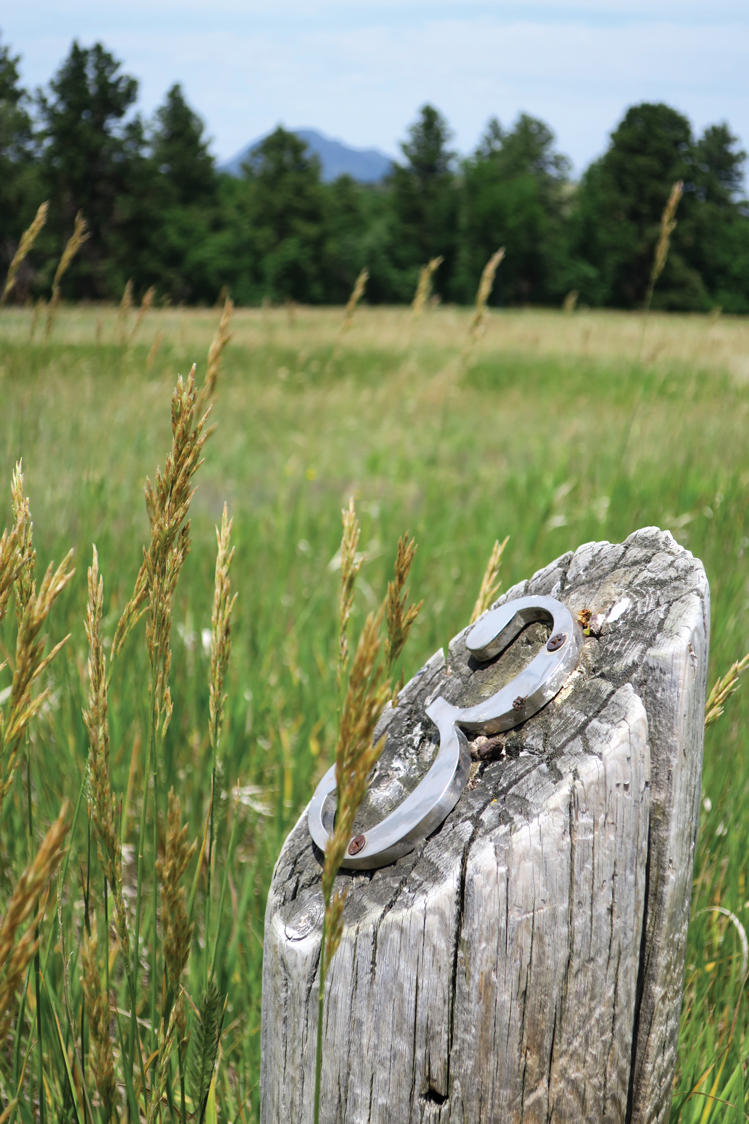 |
| A marker along the Alkali Creek Trail. |
The Alkali Creek Nature Trail is a favorite for families because there are few steep inclines and kids enjoy finding the 10 numbered posts found along the path. Each post corresponds to a story about the flora and fauna found in the area. Parents can grab a brochure at the trailhead and read at each post. We had no problem finding the first three posts in a heavily wooded portion of the trail. But at post 3 the path passed through a gate and entered a vast prairie of chest-high grasses. The path became narrower, almost like an off-road biking trail. We trained our eyes on the ground, ever vigilant for rattlesnakes, and before we knew it we had arrived at post 6.
Further up the creek lies an expanse of land where several hundred Ute Indians camped in the fall of 1906. The Utes were upset at their treatment on the Uintah Reservation in Utah. Much of their land had been allotted and portions of their reservation were opened to white settlement. They decided to live somewhere without such white encroachment and chose the sparsely settled Northern Plains.
About 400 of them left Utah and traveled through Colorado, Wyoming and into Montana before being intercepted by federal troops, including a detachment from Fort Meade. They brought the Utes to Belle Fourche, where a future meeting was arranged with President Theodore Roosevelt in which they could air their grievances. After that, the Utes were taken to a campsite along Alkali Creek, about 2 miles from Fort Meade.
A count in January 1907 showed 371 Utes living in the Alkali Creek camp. Their meeting with President Roosevelt also took place that month. The two sides agreed to create a new home for the Utes on land leased on the Cheyenne River Reservation.
The Utes began their arduous 150-mile march in June. About a month later, they arrived at their new home near the confluence of Thunder Butte Creek and the Moreau River. Unfortunately the arrangement did not last long. As part of the agreement, President Roosevelt and the Secretary of the Interior required members of the tribe to seek jobs and send their children to boarding schools, which they did not want to do. False reports of a planned uprising led to the gathering of several hundred army troops on the Cheyenne River Reservation. The Utes remained at their Thunder Butte campsite through the winter, but in the summer of 1908 they returned to Utah.
The byway includes other wide-open spaces. In one such sea of grass, ruts made by wagons traversing the oft-travelled trail between Sidney, Nebraska and Deadwood are still visible about 40 yards from the road. A little farther, visitors see the rocky remains of two cavalry jumps. And in a little valley below the road stands a long stone building constructed in 1940 to replace a wooden structure that housed targets used for practice. Terracing in front of the building marks the firing lines.
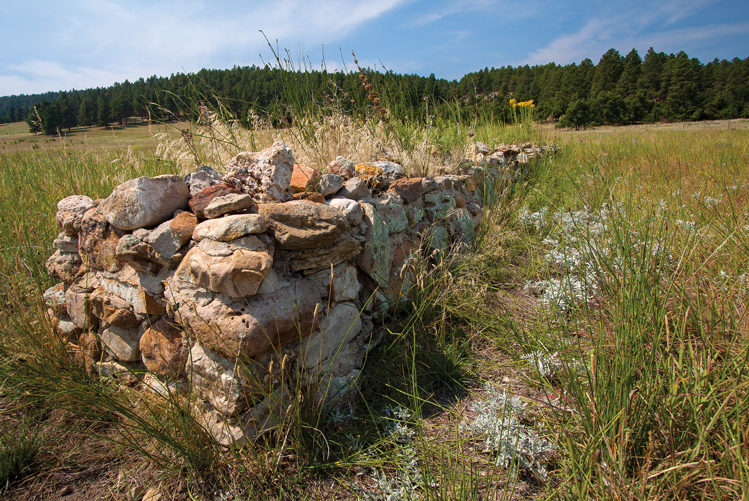 |
| The remains of an old cavalry jump. Photo by Stephen Gassman. |
The Old Fort Meade Cemetery, which also lies along the byway, is one of the only post cemeteries that remain intact. A folder inside a small visitors shelter contains a list of all 235 soldiers, wives, children and others buried there since 1878. They include two Medal of Honor winners and several soldiers from the African-American 25th Infantry.
One of the men, Corporal Ross Hallon, died as a result of vigilante justice in August of 1885. Hallon was reportedly seeing and abusing a woman from Sturgis named Minnie Lewis. She sought treatment from Dr. H.P. Lynch and told him about the source of her injuries. Lynch encouraged her to report the violent Hallon to his commanders at Fort Meade. Lewis told Hallon she would do just that if the beatings continued. Hallon, upset by what he saw as interference from the doctor, went to Lynch’s drugstore in Sturgis and shot him.
Hallon was arrested for Lynch’s murder the next day and was jailed in Sturgis. A couple of nights later, a mob of armed men broke Hallon out of jail. He was hanging from a tree west of town the next morning.
The byway passes the site of Camp Fechner, a Civilian Conservation Corps camp during the 1930s, just before it meets Highway 34 and the grounds of old Fort Meade. Though the U.S. Army deactivated Fort Meade in 1944, it remains a training institute for the 196th regiment of the South Dakota National Guard and the site of a Veterans Administration hospital. Drive the perimeter of the old parade grounds and you’ll see hospital staff walking from building to building and soldiers driving around the compound.
Many of Fort Meade’s original buildings and houses remain, including the post headquarters, which now houses the Old Fort Meade Museum. Inside we found John Tesnow, a minister and volunteer museum director. “We preserve 66 years of military history here,” he says soon after we walk in the door, in what sounds like a standard introduction for tourists. But after a few minutes of conversation, he talks about some of the fort’s more intriguing stories, including the suspicious court martial of Major Marcus Reno.
Reno was the senior surviving officer of the Seventh Cavalry after its defeat at the Battle of the Little Bighorn. His actions during the battle raised questions, but a formal inquiry in Chicago in 1879 found no grounds for court martial and offered no criticisms of his battle decisions.
Still, his reputation was clouded when he relocated to Fort Meade. The commanding officer, Colonel Samuel Sturgis, had lost his son at the Little Bighorn and clearly laid part of the blame on Reno. During his time at Fort Meade, Reno was known as a gambler and heavy drinker. Soon, he faced a court martial for public drunkenness and fighting with another officer.
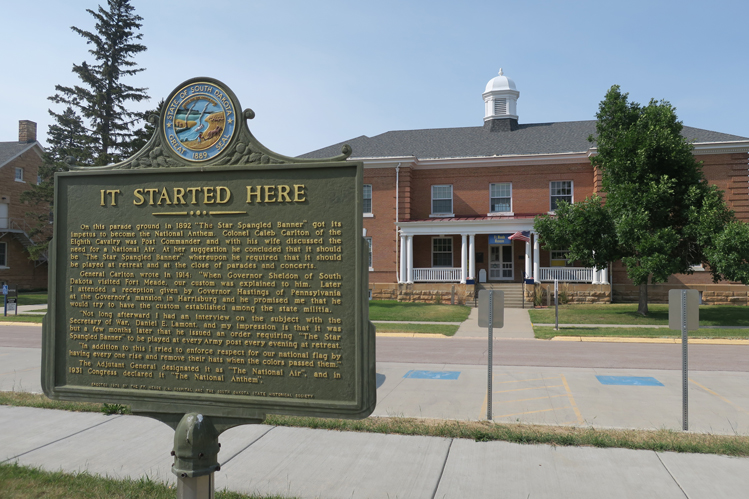 |
| Fort Meade is known for its role in elevating Francis Scott Key's "Star Spangled Banner." The museum houses many artifacts of importance to the fort's history and the West. |
While under arrest, Reno was allowed to walk the grounds for exercise. One night, as he passed the Sturgis home, he noticed the commander’s daughter, Ella, sitting by a window. Reno had become infatuated with Ella Sturgis, and could not resist the temptation to approach the house and tap on the window. He frightened both Ella and her mother, who summoned Col. Sturgis from his bedroom. Reno fled, but Sturgis had the charge of window peeping added to the list of grievances against Reno. He was convicted and dismissed from the service on April 1, 1880.
Reno spent the next nine years trying to clear his name, but he died in 1889. In 1967, a military review board re-examined the case and cleared Reno of any wrongdoing. His remains were disinterred from a cemetery in Washington, D.C. and buried at the Custer National Cemetery on the Little Bighorn battlefield. “I think he got the shaft,” Tesnow tells us.
A more uplifting legacy of Fort Meade is how “The Star-Spangled Banner” became our national anthem. In 1892, post commander Caleb Carlton sought a song that could be played at parades and concerts and at the end of every day. His wife suggested Francis Scott Key’s song, which became part of daily life at Fort Meade.
Gov. Charles Sheldon took note of the custom when he visited Fort Meade in the mid-1890s. Carlton later wrote that not long after that, he spoke to Secretary of War Daniel Lamont, who ordered the song played during retreat at every Army post in the country. Congress officially declared it the national anthem in 1931.
There’s much more to see at the Fort Meade Museum, including Poker Alice’s cavalry hat (“I’m skeptical,” Tesnow says), an original Seventh Cavalry safe that appeared in the film Dances with Wolves and other artifacts from the soldiers and their families who lived here across nearly seven decades.
The Fort Meade Backcountry Byway is maintained by the Bureau of Land Management. Its National Backcountry Byways system includes more than 2,900 miles of trails in 11 Western states, but the 5-mile stretch of gravel between I-90 and Highway 34 is the only such byway in South Dakota.
Several years ago, the idea was raised to turn the byway into a bypass route between those major roads, allowing for more traffic and increased speeds. But the BLM nixed that plan, arguing that the road itself is an important part of the historic and natural integrity of the area. Perhaps there’s no better way to explore the land of cowboys, Indians, gold hunters and soldiers than on a modern-day dusty trail.
Editor’s Note: This story is revised from the September/October 2017 issue of South Dakota Magazine. To order a copy or to subscribe, call (800) 456-5117.


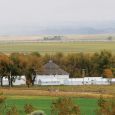

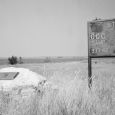





Comments